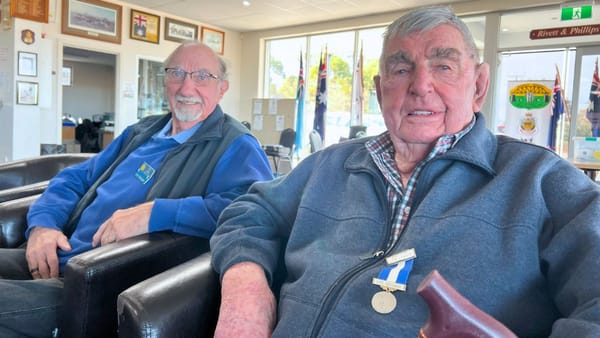Lawless, colonial Tailem Bend revealed in photo exhibition
The Life and Times of Tailem Bend, at the Coorong Gallery, shines a light on the area's history.

This story was originally published behind Murray Bridge News’ paywall. Paywalled stories are unlocked four weeks after publication. Can’t wait that long? Subscribe here.

There was a time – only a few generations ago – when Tailem Bend was a wild colonial outpost.
Some of the first European settlements in the area were camps where hundreds of workers lived while they built the inter-colonial railway.
They spent their days laying sleepers and rails, and their nights drinking and fighting.
On August 3, 1884, the violence came to a head with the murder of one worker, Patrick Conway, in his tent.
Local residents wrote to the Commissioner of Police:
There are now about 700 men, many with their wives and families, making up a population of about 1000 scattered at different places along the line where there was previously no (European) population at all. Amongst them we fear there are many bad characters, a fact that has been brought to our attention by the ganger Conway's murder last Sunday. This alone, and the probable escape of the murderer, has created a feeling of insecurity among the men. We think having proper police protection would quell such fears.
A mounted constable was posted in the area just two days later, and another a fortnight after that.
Together they maintained law and order, intercepted shipments of sly grog and reassured local residents of their safety.

The story was one of many from Tailem Bend’s past which was brought to light at the opening of an exhibition of photos and memorabilia, The Life and Times of Tailem Bend, at the Coorong Gallery on Friday.
There was the tragic day in 1885 when one of those first two policemen, Mounted Constable Charles McCullagh, was killed trying to stop a runaway horse and cart.
There was the alarming tale of a bloke named Drysdale, who was lucky to survive after trying to dry out a stick of dynamite in a frying pan.
Hundreds more memories were captured in photos hung on the gallery’s walls, illustrating everything from sporting clubs to railway cottages.

The exhibition was the result of tireless research and almost two years of planning by members of Tailem Bend Historians, including Elizabeth Nicholls, Angie Tomkinson, Kathleen and Harry Kromwyk, Peter Connolly and many more.
Ms Nicholls said the group had wanted to assemble a photographic history of the area.
“Whilst this display is not a full history, it is an attempt to give a photographic impression of the district,” she said.
“These old photographs, maps and stories, however dim or unclear, have provided us with a picture of the life and times of Tailem Bend.
“They are important because they are a mark in time.”
The exhibition will remain open from 8.30am to 5pm on weekdays until the end of May.
It will likely be housed at the Tailem Bend Info Station after that.






